All the basic single string one, two, three and four finger gymnastics can be revisited and variations created by moving a note to higher strings. Rhythmic variation are also possible.

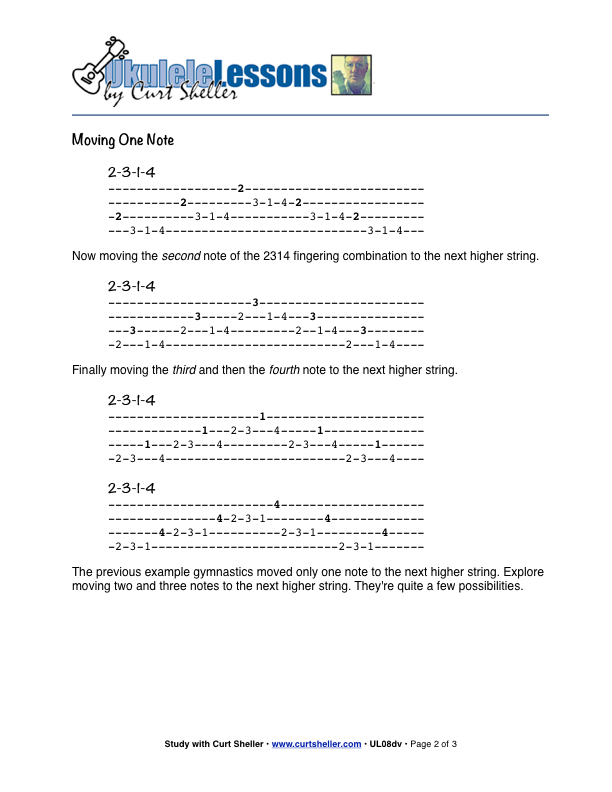
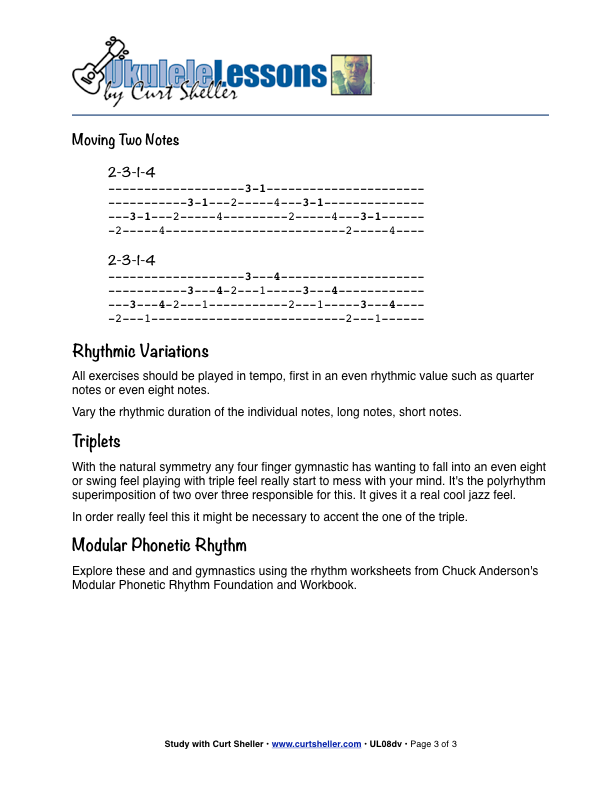



All the basic single string one, two, three and four finger gymnastics can be revisited and variations created by moving a note to higher strings. Rhythmic variation are also possible.
Available for Premium Site Access Plans Only
This lesson takes the original four finger-four notes single string gymnastics and creates adjacent string variations.
Next Steps
After the basic single note drills the next steps all depend on where you are in your development and any particular technique issues you might want to work on. Try the open string, pairs, barre, repeating note and chord drills.

All the basic single string one, two, three and four finger gymnastics can be revisited and variations created by moving a note to higher strings. Rhythmic variation are also possible.
Available for Premium Site Access Plans Only
This lesson takes the original four finger-four notes single string gymnastics and creates adjacent string variations.
Next Steps
After the basic single note drills the next steps all depend on where you are in your development and any particular technique issues you might want to work on. Try the open string, pairs, barre, repeating note and chord drills.

Four Finger, Single Note, Single String Gymnastic Variations
Common tips applicable to ALL finger drills.
As these drills don't really sound all that musical. They can be played while watching TV or riding a stationary bike. Their main goal is to get in a lot of reps and develop your chops. For a bit of musicality you can introduce a rhythmic component, simply by making some of the notes longer and some shorter.
However, even if done as part of another activity, you should focus on the drills.
- PLAY RIGHT BEHIND THE FRET, but not on it. Your finger should feel the fret but not be over the fret. This is the area that takes the least amount of pressing and pressure to get a good-sounding note. It allows you to come on and off notes quickly. Single notes right behind the frets are possible for ALL notes. For chords, get as close as possible if another adjacent finger on the same fret has taken that role.
- Keep your finger tips pointing to the strings when not being used. That IS their job, to play notes. Not point to the ceiling, floor, or walls. We want
Quiet Hands
and NOT fingerFlying
all over the place. - Keep your thumb in the position of strength and support — Behind the Neck! UkuleleLesson: Proper Fretting Hand Placement
- Keep your fingers close to the strings, ready to go. Your fingers need to be over the frets and current string(s) that they are currently playing or going to play. Four fingers can cover four frets — stay in position ready to go.
- Always play in-control and accurate. This is easy to accomplish if you do the drills SLOW, accurate, and in-control.
Fast is nothing than, slow quicker.
- Say the finger combination that you are working on to insure the fingers are actually doing the drill you think you are doing.
- If the next note is higher and on the same string, keep the current finger down – No need to release the string just to press is down again.
- Do ALL drills Ascending (Nose to Toes) and Descending (Toes to Nose), the same drill. 1234 ascending and 4321 descending are different drills. There are 4 single fingers, 12 two finger combinations, 24 three finger combinations, and 24 four finger combinations.
- Start on different frets.
- Start on string one and play descending then ascending.
- Do a sub set of the strings. Get really good at strings one and two then add string three, etc. Build on a solid foundation.
- Try combinations of the 2, 3, and 4 finger drills. This one is hard to track if doing more the two different combinations at a time, so reading the combinations might be helpful.
Related Lessons, Videos, Lesson Series, Songs, Books & Reference Charts, Resources & Assets, Workshops are below.
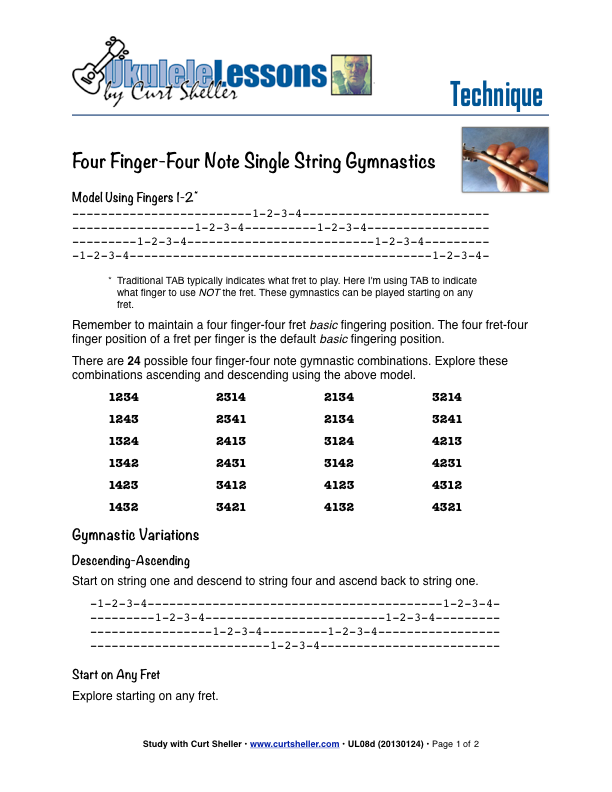
To play the ukulele effectively, your fingers need physical strength, agility, flexibility and coordination. This four finger-four note drill is designed to get your hands in shape. These exercises work no matter what style of ukulele you play or want to play.
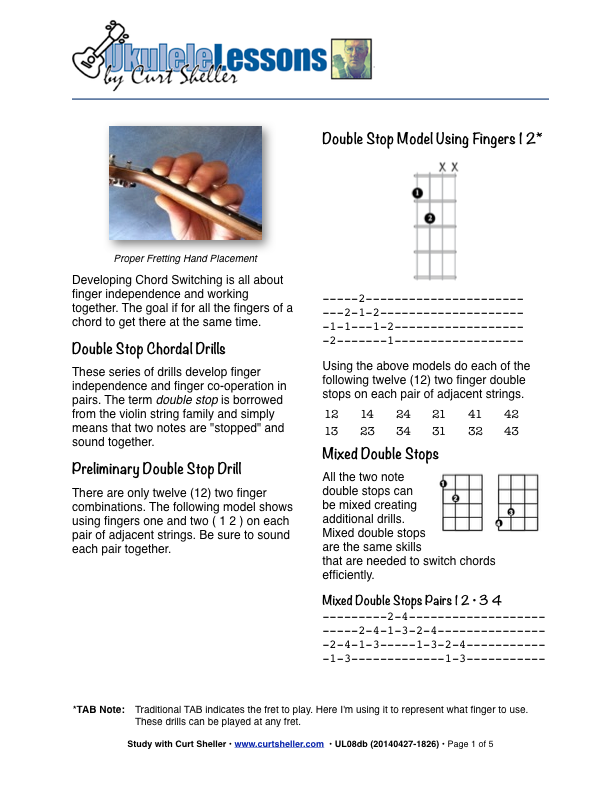
Switching chords are all about finger independence and working together. This can be developed using the "double stop" fingering drills presented in this lesson. A "double stop" is a term borrowed from violin technique where you are stopping two strings or two notes - an interval.
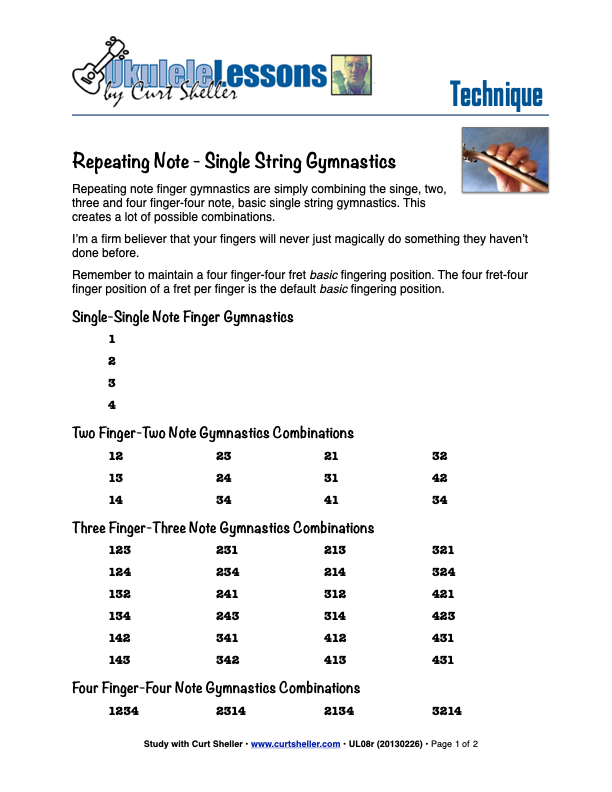
Building on the single note, 1, 2, 3, and 4 finger basic gymnastics. Now with a repeating note or two. This series of lessons, although the examples are shown for ukulele, are appropriate for any fretted string instrument like guitar, banjo, or mandolin.
Four Finger, Single Note, Single String Gymnastic Variations.

Modular Phonetic Rhythm represents a significant advance in the teaching and application of rhythm. Eliminating many inefficient aspects of rhythm education, Modular Phonetic Rhythm streamlines the traditional educational approach, resulting in a reflexive reaction to rhythm.


return in your investment)—it is this— learning the
f*ckingnotes of your OWN instrument. Sorry for the tough talks—but it is sooooo true!


Learn to read single note melodies in the first/open position is a lot easier than you might think. Book: Ukulele – Reading Music Series – Primer

An organized collection of daily practice and reference material for the contemporary ukulele player for developing the vocabulary and knowledge necessary for single note playing. Book: Daily Practice Material for the Contemporary Ukulele
Checkout the Books & Reference Charts for additional Handy, Dandy Reference Charts.

Ukulele Fingerboard Chart for C Tuning, Low or High G – G C E A

Ukulele Fingerboard Chart for G Tuning, Low or High A – D G B E

A handy reference chart of all 15 major and relative minor key signatures. US Letter 8.5 x 11 sized (ANSI-A) , A4



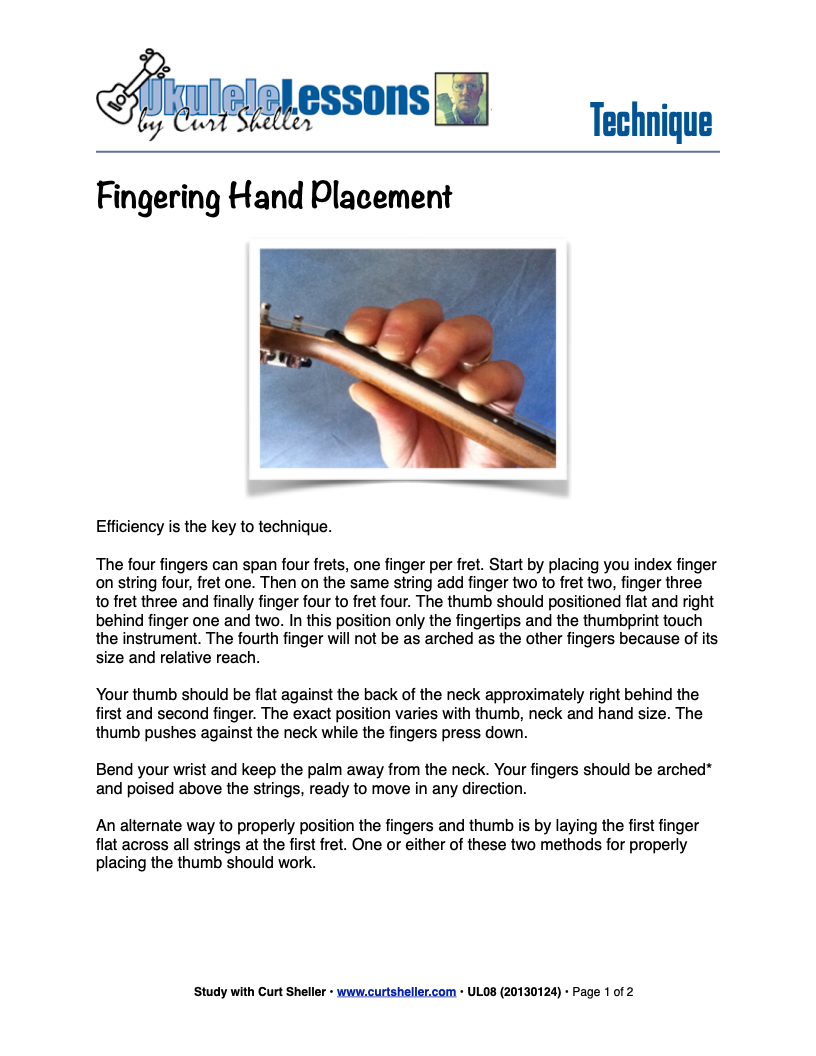
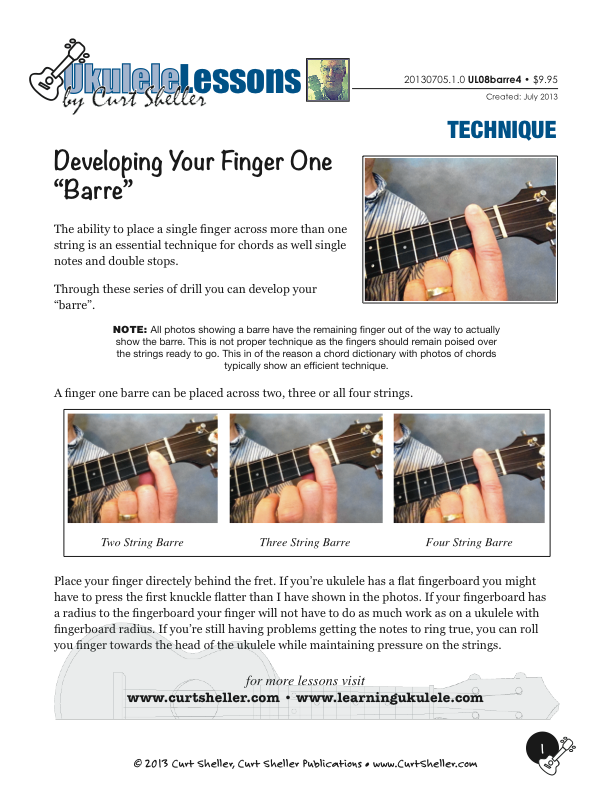

.jpg)